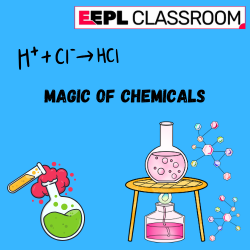Understanding Chemical Reactions
Chemical reactions are fundamental processes that signify the transformation of substances into new ones. They occur when reactants, the initial substances, engage in interactions that lead to the formation of products, the resultant substances. At the core of these processes is the law of conservation of mass, which asserts that matter cannot be created or destroyed in a closed system. This principle is essential as it emphasizes that the total mass of reactants must equal the total mass of products throughout any given reaction.
The mechanism of chemical reactions can be intricate; however, they can generally be categorized into several types. One prominent type is synthesis reactions, where two or more reactants combine to form a single product. Conversely, decomposition reactions involve a single compound breaking down into two or more simpler products. Additionally, single displacement reactions occur when one element replaces another in a compound, while double displacement reactions involve the exchange of partners between two compounds. Lastly, combustion reactions are characterized by a substance combining with oxygen, often resulting in the release of energy in the form of heat and light.
Understanding the magic of chemical reactions is not merely an academic exercise; it profoundly influences our everyday life. From the baking of bread, where yeast ferments sugars, to the rusting of iron, these chemical phenomena occur continually around us. As observed in class 9 science studies, grasping these concepts lays a foundation for appreciating the complexity and simplicity of the chemical changes we encounter daily. The interactivity and dynamics of chemical reactions contribute significantly to countless processes, making them indispensable in the fabric of our lives. Recognizing their pervasive nature can foster a deeper respect for the science that underpins our existence.
Chemical Reactions in Our Daily Lives
The magic of chemical reactions manifests in numerous ways throughout our everyday lives, often occurring unnoticed. A prime example is the process of cooking, where various chemical reactions take place to transform ingredients into flavorful meals. One notable reaction is the Maillard reaction, which occurs when proteins and sugars in food react under heat, resulting in the browning and development of complex flavors in items such as roasted meat and baked bread. This intricate interaction highlights how chemistry not only facilitates cooking but also enhances our sensory experiences during meals.
Another everyday application of chemical reactions can be observed in cleaning. The reaction between vinegar and baking soda is a familiar household practice. When combined, these two substances undergo a chemical reaction that produces carbon dioxide gas, creating bubbles and fizzing action that assists in breaking down dirt and grime. This simple yet effective reaction illustrates the practical utility of chemistry in maintaining cleanliness in our homes, demonstrating how the magic of chemical reactions can be effectively utilized for convenience.
Moreover, chemical reactions are fundamental to biological processes within our bodies, significantly affecting our health and functionality. For instance, the digestion of food involves a series of chemical reactions that break down macromolecules into smaller units, allowing our bodies to absorb nutrients. Enzymatic reactions play a crucial role in facilitating these transformations, showcasing the essential link between chemistry and our physiological well-being. As we engage in daily activities, the underlying chemistry continuously shapes our experiences, enhancing not only the functionality of various tasks but also contributing to the overall quality of life.
In conclusion, chemical reactions are omnipresent, intricately woven into the fabric of our daily routines. From cooking and cleaning to the biological functions essential for survival, the magic of chemical reactions enriches our lives in ways that often go unnoticed but are undoubtedly impactful.
The Role of Chemical Reactions in Technology and Innovation
Chemical reactions are fundamental to the advancements in technology and innovation that we experience in our everyday lives. They are the driving force behind the development of new materials, pharmaceuticals, energy solutions, and food preservation methods. Understanding the magic of chemical reactions is essential, particularly as we see how they can transform theoretical principles from class 9 chemistry into practical applications that influence our daily experiences.
One prominent example of the significance of chemical reactions can be observed in the battery technology, which is vital for powering electronic devices. Batteries operate through electrochemical reactions, where chemical energy is converted into electrical energy. This principle has enabled the development of portable power sources that support the proliferation of smartphones, laptops, and electric vehicles. Innovations in this area continue to emerge, particularly with the aim to enhance battery life and reduce environmental impact, which illustrates the crucial role chemical reactions play in the evolution of technology.
Moreover, the pharmaceutical industry relies heavily on chemical reactions to develop new medications for various health issues. Through intricate processes involving the synthesis of compounds, chemists are able to create life-saving drugs that address conditions such as cancer and infectious diseases. This synergy between chemical reactions and medical advancements highlights the essential nature of chemistry in enhancing the quality of life.
In the realm of renewable energy, chemical reactions are instrumental in harnessing energy sources like solar and hydrogen. For example, the process of photosynthesis in plants, a natural chemical reaction, serves as inspiration for developing synthetic methods to capture solar energy efficiently. Additionally, chemical reactions are essential in methods used for food preservation, ensuring that agricultural products remain safe and consumable for longer periods.
As we continue to explore the potential of chemistry in various domains, it is evident that the magic of chemical reactions not only shapes technological innovation but also provides solutions to pressing global challenges. Through ongoing research and understanding, we pave the way for a future deeply rooted in scientific progress that reinvents our everyday life.
Embracing the Science of Chemical Reactions
The intricate interplay of chemical reactions is not merely confined to the confines of laboratories or textbooks; it shapes our everyday existence in profound ways. By embracing the science of chemical reactions, we can cultivate a deeper appreciation for the world around us. For students in class 9, an understanding of these reactions can spark curiosity and encourage a hands-on approach to learning. It is through exciting experiments, such as observing the fizzing reaction of vinegar and baking soda, that individuals can experience the magic of chemical reactions firsthand.
Encouraging engagement in scientific exploration is vital. Simple experiments can be replicated at home or in the classroom, providing a practical and enlightening experience. The creation of slime, the fermentation of bread, or the oxidization of iron in rusting are all examples of reactions that are easily observed and understood. Each of these exercises not only illustrates a fundamental chemical principle but also demonstrates how these reactions pervade our daily lives. Observing the changes that occur as ingredients interact helps reinforce the concept of chemical reactions as a dynamic part of nature.
Furthermore, elevating chemical literacy is increasingly important in today’s science-driven world. Understanding the principles behind reactions allows individuals to critically engage with topics such as environmental science, medicine, and technology. By fostering a culture of inquiry and exploration, we empower individuals to recognize the beauty of chemistry in their daily experiences. Connecting the molecules and atoms that vibrate all around us to personal narratives can inspire appreciation for science as not just an abstract concept but as a tangible force that influences our health, environment, and overall experience of life.
In conclusion, by engaging with the science of chemical reactions, we not only enrich our understanding of the natural world but also inspire curiosity and respect for the beauty inherent in everyday experiences. It is through this lens that we can appreciate the magic of chemical reactions and their ubiquitous role in our lives.










